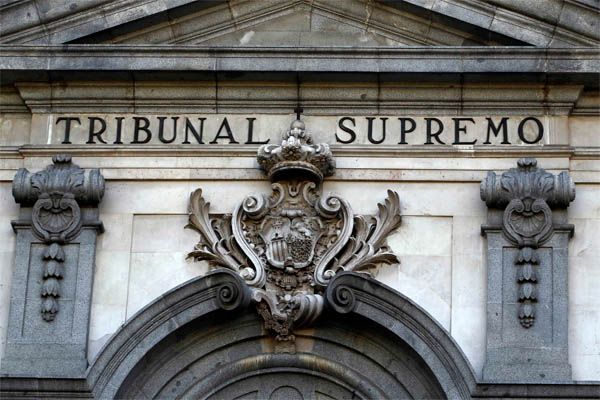 The Supreme Court has declared contrary to the legal system the Revision of the General Urban Plan (PGOU) of Marbella done in 2010 and therefore it has been declared null and void. This plan sought to regularize the situation of more than 16,500 illegal housing built mainly during the local governments of the GIL party by means of facing financial compensations and transfers of land to the Town Hall. However, from the very beginning it was a very controversial subject with numerous objections and appeals.
The Supreme Court has declared contrary to the legal system the Revision of the General Urban Plan (PGOU) of Marbella done in 2010 and therefore it has been declared null and void. This plan sought to regularize the situation of more than 16,500 illegal housing built mainly during the local governments of the GIL party by means of facing financial compensations and transfers of land to the Town Hall. However, from the very beginning it was a very controversial subject with numerous objections and appeals.
Ramón Otaolaurruchi Angulo, a partner of our firm, has been one of the lawyers who prepared one of the appeals that have led to the annulment by the Supreme Court of the hitherto existing PGOU.
What are the reasons for the cancellation?
The Supreme Court argues in these judgments the causes of nullity:
The first refers to the absence of Strategic Environmental Assessment (SEA) in the form required by Article 8.1 and Annex 1 of Law 9/2006 of 28 April on Assessing the effects of certain plans and programs on the environment that basically transposed into national law the Directive 2001/42/EC of the European Parliament and the Council. The Supreme Court considers that the Environmental Impact Study that was included in the developing documents of the PGOU does not really undertake an analysis of the different reasonable alternatives, including the “zero alternative” (failing to perform the plan) through a comparative study from the perspective of the potential impact that these alternatives could cause to the environment.
Another cause of nullity is the lack on the PGOU file of an Economic Sustainability Report as required by Article 15.4 of Royal Decree 2/2008 that approves the revised text of the Land Law. The administration is required to accompany this report on the actions of new planning, alteration or renovation of a existing one and development of public infrastructures and facilities. In this case the report was never included.
But besides these two causes, the Supreme Court lists others:
1. To legalize what a tribunal or a judge has declared to be illegally built does not fall within the scope of the power of urban planning.
The Supreme Court reminds that the power of executing sentences and other judgments pertains exclusively to the court which has known the case at first or sole instance, as it is stated in the Law Regulating the Contentious Administrative Jurisdiction (LRJCA), in the Organic Law of Judicial Power (LOPJ) and, more generically, in Article 117.3 of the Spanish Constitution.
A judgment may be unenforceable if there is a sudden change in the applicable legislation, but that qualification and its consequences must be declared by the judicial body that issued them. Therefore, the sole modification of the planning does not automatically produce the legalization of those buildings which comply with the new regulation but which did not do so with the previous one from which they had origin.
The Supreme Court declares that the approval of a new urban planning is not enough to legalize the housing outside the law. The competent body, which in this case is the High Court of Andalusia, should be urged to do it.
The administrative power is perverted if planning moves away from its normatively predetermined goal. Its mission is to achieve rational management of physical space within its scope, that is the planning of the land where it has authority to rule. The goal of the planning power cannot be the legalization or “normalization” of what has been built illegally, because then it would turn away not only from its purpose but also from its scope.
2. The planner cannot legally alter or distort the concept of Unconsolidated Urban Land (SUNC).
Unconsolidated Urban Land (SUNC) is the area in which building is permitted but in which the infrastructures and facilities that would label it as urban are not fully completed, either because they are not yet developed or because they are insufficient. In these cases it is not enough to have the building permission granted in order to build on them but it is necessary to comply with other more burdensome requirements for their owners, such as transferring free of cost a percentage of its use to the Town Hall or facing the development of the infrastructure (roads, squares, sewage, etc.).
The jurisprudence of the Supreme Court has established that the difference between the two categories of urban land is regulated, that is, that the administration is obliged to categorize a certain urban land as consolidated or not, when the conditions established by law are given.
In various judgments the Supreme Court declared inadmissible that areas that undoubtedly have the infrastructures and services required to be considered as consolidated urban land and that are fully consolidated by their buildings, lose their category and become SUNC by the mere fact that the new plan contemplates for them a certain urban transformation.
The Supreme Court considers that the revision of the General Plan of Marbella 2010 abuses of the Transitional SUNC figure, not foreseen in the Andalusian Urban Planning Law, to categorize the buildings that suffer from irregularities, such as excessive volume or use, without a deficit in infrastructure or services being accredited.
3. The legal accountability mechanisms cannot be altered by the planner.
The General Urban Plan stated in Article 3.1.1.4.2º of the Rules that “the developers of those irregular constructions that this plan considers subjected to normalization, although they might not be the current owners, cannot be subtracted from the fulfillment of the obligations and duties established by the planning legislation.” Likewise Article 10.3.12.4 adds that “under no circumstances it shall be understood that the developers of the irregular constructions object of the normalization have been released from the obligations and duties established by the applicable or enforceable planning legislation against them, subsisting these obligations and duties until they have been totally satisfied.”
The Supreme Court states that these charges can only pertain to those who are listed today as owners of the properties that had a sentence declaring the illegality. The large jurisprudence is based on Article 19 of the revised text of the Land Law under which the transfer of property does not change the status of the title holder with respect to the duties of the owner. Thus, the new owner is subrogated to the rights and duties of the previous owner as well as to the obligations assumed by them in front of the competent authority and that have undergone registration.
4. The Town Hall cannot request new reparations that alter the balance of property rights and that moreover depend on the level of legalization prepared by the Town Hall itself.
The General Urban Plan sets out a number of financial compensations, even to those who are not the owners of the plots anymore (developers), based on over-exploitation and lack of infrastructure or facilities, to finally fund these infrastructure, equipment and services and to regularize, compensate or repair the results of the illegal constructions.
The Supreme Court believes that this is not supported by any law and although in principle it is destined to obtain new infrastructure and services, its final goal, as the whole process of normalization set up by the Town hall is to retrospectively penalize infringements and thus try legalization.
What are the consequences of the invalidity of the General Urban Plan?
The cancellation of the General Plan firstly entails that the current valid planning for the city of Marbella goes back to the old General Plan of the year 1986, that is a nearly 30 years old plan. That is why it is urgent that the Council and the Junta de Andalusia (regional government) start without hesitation to work on drafting a new plan that for once and all solves the problem of urban planning in Marbella. The major has already expressed his aim to have a new plan within 6 months.
With regard to the properties that were subject to the normalization scheduled in the annulled PGOU they will go now off planning in a kind of legal limbo. These houses, according to the judgments of the Supreme Court cannot be legalized by the approval of a new urban plan and following the Court’s reasoning the plan should not aim to legalize these properties constructed out of planning but to organize the planning required for the city during the coming years. The competent Courts shall be solely responsible for declaring legal or illegal each and every property and for the consequences that will be derived. This does not mean that the new plan cannot include the most of the properties irregularly built, just that is not its duty to legalize them.
There is some discomfort that comes from the uncertainty created by the annulment of the General Plan as now the city lacks of an urban planning according to the actual needs but also for this situation of legal limbo in which a good number of properties remains after the sentence, but this should not distract us from the fact that the plan was wrongly drafted from the very beginning, both in its forms and content and the proof of it was the large number of allegations and appeals that were presented. Marbella needs a modern urban planning in the line with the needs of the city and in order to leave behind years of illegal development and subsequent legal patches that never supplied a real legal security. Now a window of opportunity opens. Hopefully we will know how to take it.
Luis M. Vicente Burgos
VICENTE & OTAOLAURRUCHI ABOGADOS






